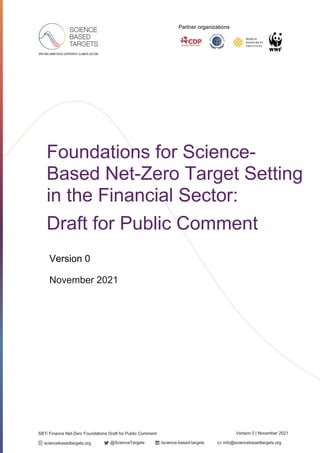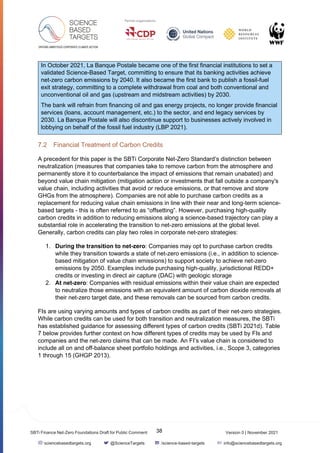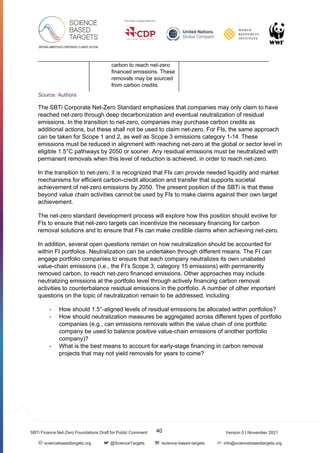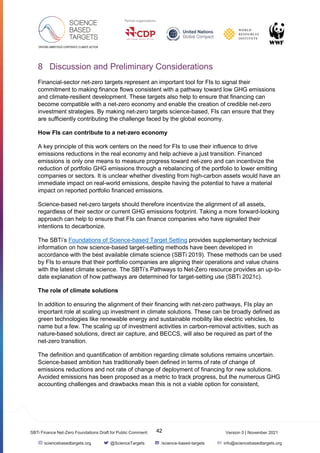This document provides an executive summary of a foundations paper drafted by the Science Based Targets initiative (SBTi) regarding principles, definitions, metrics, and considerations for financial institutions to set quantitative net-zero targets. The summary outlines key questions addressed, such as what reaching net-zero means for a financial institution and how financed emissions and climate solutions should be addressed. It also provides an overview of the process for developing an SBTi Finance Net-Zero Standard to guide financial institutions in setting robust, science-based net-zero targets.



















































